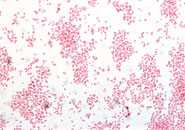Disease Specifics
On This Page
Pertussis is an acute infectious disease caused by the bacterium Bordetella pertussis. In the 20th century, pertussis was one of the most common childhood diseases and a major cause of childhood mortality in the United States. Before the availability of pertussis vaccine in the 1940s, public health experts reported more than 200,000 cases of pertussis annually. Since widespread use of the vaccine began, incidence has decreased more than 75% compared with the pre-vaccine era.
However, since the 1980s there’s been an increase in the number of reported cases of pertussis. In 2012, the last peak year, CDC reported 48,277 cases of pertussis. However, CDC believes that much of the disease goes unrecognized and unreported.
Several factors have likely contributed to the increase in reported cases, including
- Increased awareness and improved recognition of pertussis among clinicians
- Greater access to and use of laboratory diagnostics, especially polymerase chain reaction (PCR) testing
- Increased surveillance and reporting of pertussis to public health departments
- Waning immunity from vaccines
Additionally, Bordetella pertussis are also always changing at a genetic level. Research is underway to determine if any of the recent changes contribute to the increase in disease.
Bordetella pertussis
B. pertussis is a fastidious, gram-negative bacterium requiring special media for isolation. B. pertussis produces multiple antigenic and biologically active products including:

Gram stain of Bordetella pertussis
- Pertussis toxin
- Filamentous hemagglutinin (FHA)
- Agglutinogens
- Adenylate cyclase
- Pertactin
- Tracheal cytotoxin
These products are responsible for the clinical features of pertussis and an immune response to one or more produces immunity following infection. Some observational studies suggest that pertussis infection can provide immunity for 4 to 20 years, but that it is not life-long.
Pathogenesis
Pertussis is primarily a toxin-mediated disease. The bacteria attach to the cilia of the respiratory epithelial cells, produce toxins that paralyze the cilia, and cause inflammation of the respiratory tract, which interferes with the clearing of pulmonary secretions. Until recently, scientists thought that B. pertussis did not invade the tissues; however, recent studies have suggested that the bacteria are present in alveolar macrophages.
Reference
- Pink Book’s Chapter on Pertussis
Epidemiology & Prevention of Vaccine-Preventable Diseases textbook
Related Pages
- Page last reviewed: August 7, 2017
- Page last updated: August 7, 2017
- Content source:


 ShareCompartir
ShareCompartir